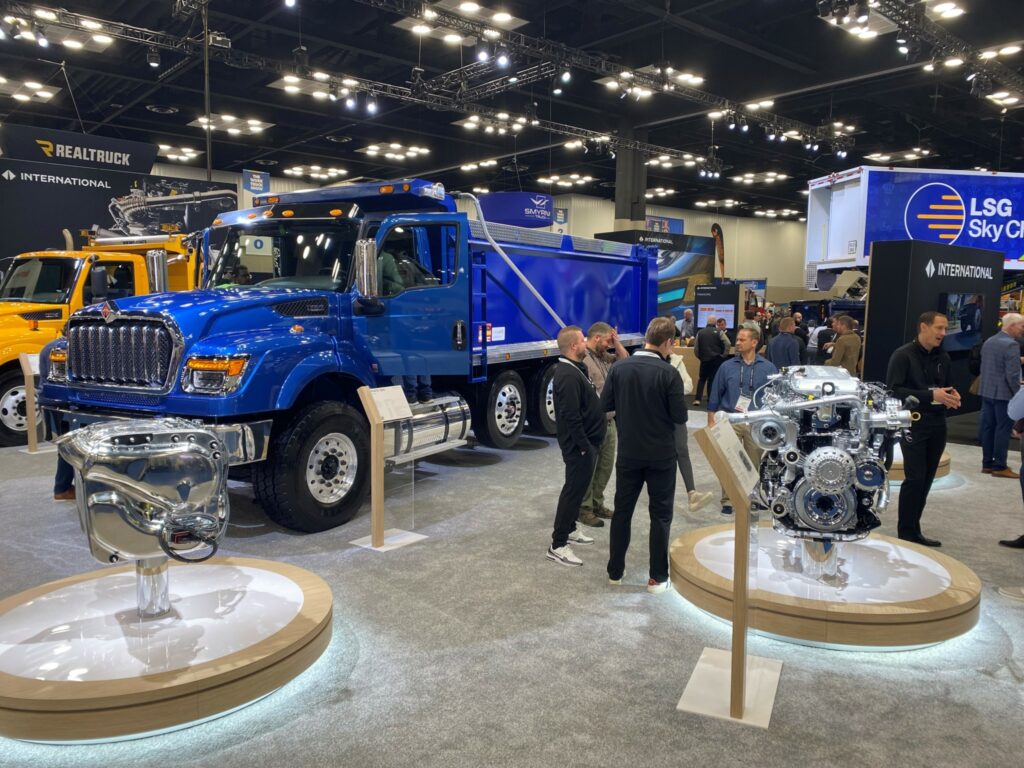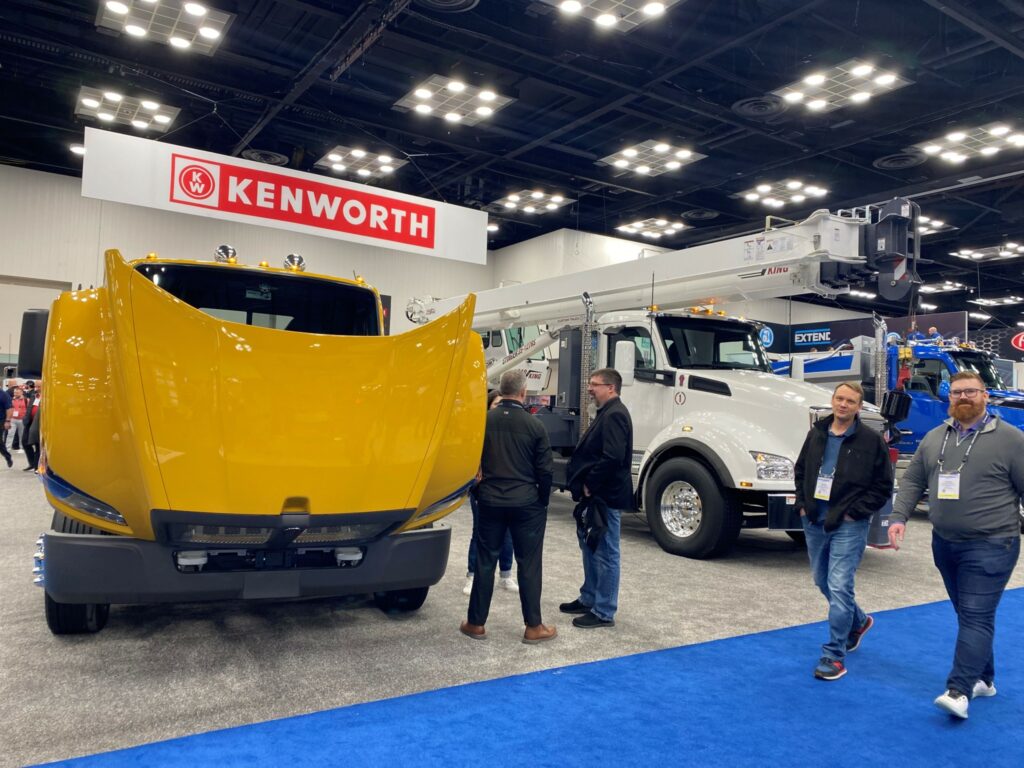Customer demand and OEM innovation are driving new technology and sustainability in medium-duty trucking.
Safety and connectivity attract customers toward products to navigate the future, OEM representatives told TruckNews.com during Work Truck Week in Indianapolis, Ind.
Aaron Scates, vice-president, vocational and medium-duty market development at Daimler Truck North America (DTNA), sees a truck operator’s safety as the cost of entry to a job site in the future.

Every truck has a factory installed backup camera along with a rear proximity sensor that emits an audible alert, he said.
“It’s a belt-and-suspenders way to make sure you are not reversing into or over something. I believe it’s going to become a requirement that any vehicle coming on and off a work site will be mandated to have some form of active safety. And we want to be at the forefront,” Scates said.
Kyle Kimball, director of marketing at Kenworth, said safety systems have come a long way since air disc brakes were introduced. Digital mirrors on trucks have made drivers’ lives easier, especially during low-light and adverse weather conditions, noted Alex Reid, vocational marketing manager.

Manufacturers are aware that the journey toward sustainability is multi-faceted.
Keeping this in mind, International is expanding its portfolio of electric vehicles, integrating alternative fuels like renewable diesel, and improving overall vehicle efficiency.
Debbi Shust, vice-president of customer insights and experience at International, noted the OEM is collaborating with industry partners to enhance charging infrastructure and fleet electrification strategies that make sustainability more accessible to customers.
BEVs for the future
“We believe that BEV (battery-electric vehicles) is the future, but we realize that the pace of adoption will vary,” Shust said. “Things like using renewable diesel in our new S13 engine are huge enablers to that longer vision.”
She added that BEVs eliminate tailpipe emissions and significantly lower the total carbon footprint of vehicles, especially when charged with renewable energy sources.
Speaking of engines, Jim Nebergall, executive director – market strategy, Cummins, said idle reduction technologies are important for medium-duty trucks since they spend a lot of time idling.
Cummins idle reduction technology
He said the focus is on continued fuel efficiency improvements and reduction in greenhouse gases with diesel powertrains. Idle reduction technology is the most cost-effective way to reduce emissions, he added.
Cummins keeps an eye on trends and prepares for them by investing in products that customers are interested in.
DTNA’s Scates said that from a greenhouse gas perspective, automated manual transmissions (AMTs) are more efficient than manuals. This is possible due to sophisticated clutch control, shift control, a tightly integrated engine map, and shift map.
He foresees AMT technology growing over the next five years. “This will make drivers safer, more efficient, less fatigued and it protects the equipment.”

As OEMs work toward improving sustainability options, sometimes simple options can make a difference.
DTNA is putting charging stations behind work trucks instead of on islands in between them. Kevin Otzenberger, product marketing manager, medium-duty and vocational market, noted it is safer to back in than nose in because you can see when you are leaving after charging the vehicle.
Connectivity
As work trucks get even more technologically advanced, connectivity helps fleet managers make crucial operational decisions.
Kenworth’s Kimball said buyers are demanding more information. Fleet managers need to know what is going on with their trucks. It boils down to fleet efficiency.
DTNA’s Scates agreed, saying connectivity is an area that offers opportunities in the future.

He’s also excited about the flexibility of architecture, offering the QuickFit Interface System as an example. This simplifies the integration of truck equipment to the vehicle’s electrical system. It features an advanced multiplexed electrical system designed for easy truck equipment manufacturer interface, programming and access to power.
“We offer an electric sandbox for our trucks. Customers can go in and program their own flexible logic to control their body systems,” Scates said.
Kenworth is pursuing a three-pronged strategy as it looks to the future. Vocational marketing manager Reid said the OEM is targeting continued reductions in emissions from diesel powertrains. A lot of money is also being spent on zero-emission product lines and battery technologies. The third part of the strategy is hybridization, to provide a bridge to the future.
International’s Shust said customers are looking for practical sustainability options. They want vehicles and technologies that reduce emissions while maintaining reliability, affordability, and ease of adoption.
“They want flexibility in their transition. Infrastructure and total cost of ownership remain key considerations in EV adoption,” she said. The goal is to develop solutions that align with customers’ real-world applications while advancing a sustainable future, she added.